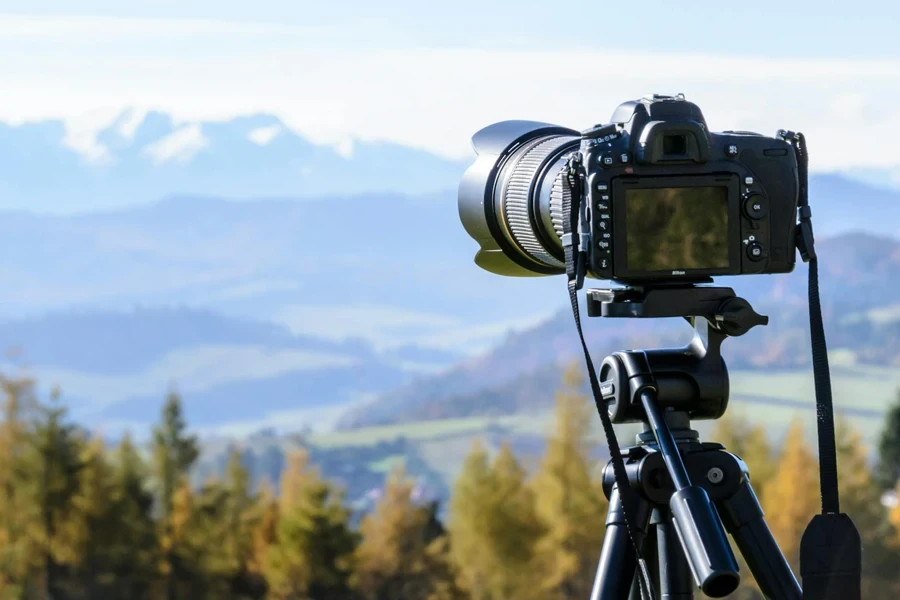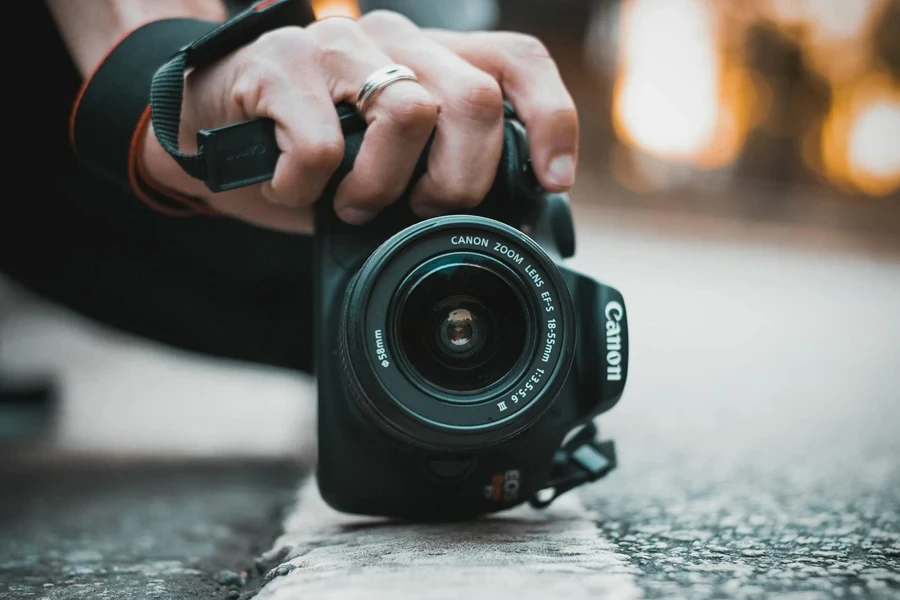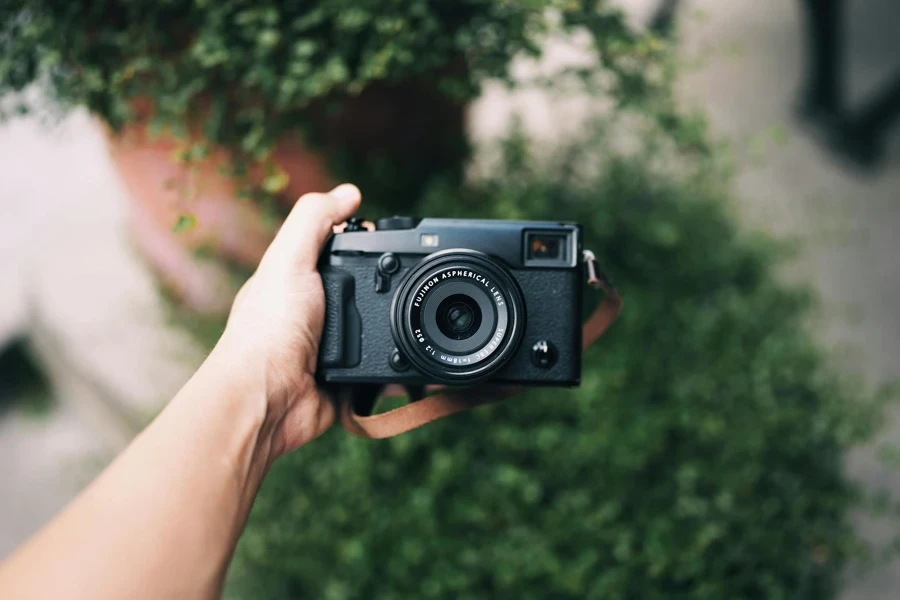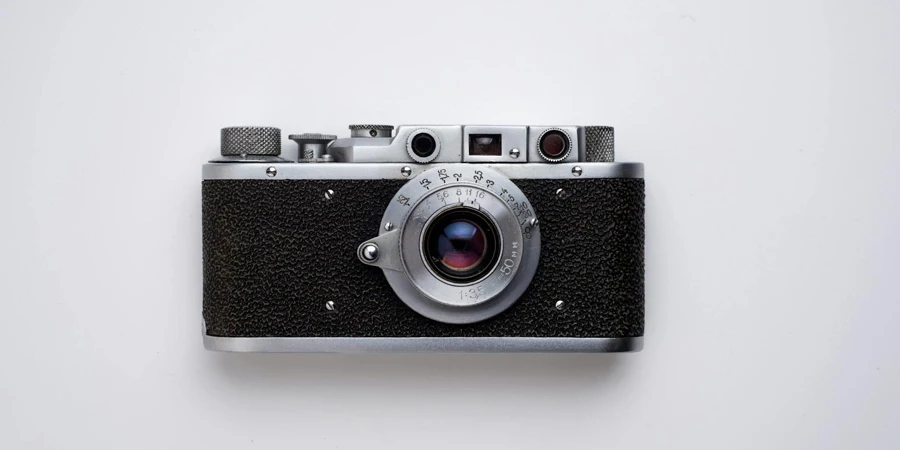Table of Contents
● Introduction
● Market overview
● Different types of cameras and their features
● Things to consider when selecting cameras
● Conclusion
Introduction
In the dynamic realm of consumer electronics, the selection of appropriate cameras and photography accessories plays a pivotal role in enhancing content quality and operational efficiency. For business professionals and online retailers, grasping the intricacies of the latest camera technologies and market trends is indispensable. This guide explores the essential aspects of camera selection, including an analysis of the current market landscape and an evaluation of various camera types and their features. Whether upgrading photographic equipment or considering the acquisition of new gear, this article provides the necessary knowledge for making informed decisions that meet business requirements and budget considerations.

Market overview
The camera and photo accessories market is poised for rapid growth, with a forecasted Compound Annual Growth Rate (CAGR) of 13.5% from 2022 to 2032 as per Future Market Insights. This dynamic expansion is primarily fueled by people’s interest in photography as both a professional career and a personal hobby, which in turn is driving up the demand for high-quality photographic equipment like lenses, bags, tripods, and flashcards. According to Future Market Insights, this vigorous growth trajectory is supported by continuous technological advancements and innovative product developments that cater to a wide-ranging consumer base looking to significantly enhance their photographic capabilities.
On the competitive front, the market is led by key industry giants who are continuously diversifying their product portfolios and engaging in strategic alliances and technological advancements to secure their market presence. These market leaders are dedicated to incorporating advanced digital technologies and enhancing product features to meet the complex demands of modern, tech-savvy consumers. According to projections from Future Market Insights, these focused initiatives are expected to significantly boost the market’s value, escalating it from a valuation of US$ 2.7 billion in 2020 to an impressive US$ 12.34 billion by 2032.

Different types of cameras and their features
Navigating the multifaceted landscape of the camera market is essential for professionals seeking to refine their gear for particular photographic endeavors. Each camera type boasts distinct advantages, shaping the shooting experience to cater to the photographer’s requirements and the specificities of their working environment.
DSLR cameras
Digital Single-Lens Reflex (DSLR) cameras have cemented their reputation for robustness and superior image quality, making them the preferred choice for many professional photographers. Their acclaim stems from their adaptability across diverse shooting scenarios, supported by a wide-ranging lens ecosystem. This flexibility enables effortless transitions from broad landscapes to intricate portraiture. DSLRs are particularly favored for assignments that demand extended shooting times, thanks to their sizable bodies which house larger batteries and offer better handgrip, thus ensuring comfort and stability over long periods.
Mirrorless cameras
The ascent of mirrorless cameras in the photography world offers a more compact and lightweight alternative to DSLRs, without sacrificing performance. These cameras excel with their rapid shooting speeds and reduced form factor, aligning perfectly with the demands of travel and urban photography. A standout feature is the electronic viewfinder, presenting a real-time image preview and allowing precise pre-capture adjustments to exposure, enhancing the accuracy of the final shot.
Compact cameras
Noteworthy for their convenience and ease of use, compact cameras provide a user-friendly option that doesn’t compromise on capability. Even within their small frames, select models boast advanced features such as RAW shooting capabilities and full manual control, appealing to those who wish for power in a pocket-sized package. These cameras are ideal for spontaneous photography, offering quality and versatility in situations where carrying larger equipment is impractical.
Action cameras
Built to capture the essence of motion and adventure, action cameras are engineered for resilience, capable of producing dynamic, high-definition visuals under the most challenging conditions. With attributes like water resistance, shock absorption, and dust protection, they’re suitable for a broad spectrum of outdoor activities, from water sports to off-road cycling. Their versatility is further enhanced by a variety of mounting options, enabling creative perspectives by attaching the camera to helmets, vehicles, or gear.
Medium format cameras
Occupying the upper echelon of image quality and resolution, medium format cameras stand unrivaled. Their significantly larger sensors capture imagery with extraordinary detail and color depth, ideal for high-end editorial work and expansive scenic photography. While their premium cost and larger size might limit them to more specialized applications, the unparalleled clarity and image fidelity they deliver are critical for projects where only the utmost quality will suffice.
360-degree cameras
For a comprehensive visual capture, 360-degree cameras offer a panoramic perspective, perfect for crafting virtual reality experiences or chronicling extensive scenes in real estate and tourism. These devices stitch together footage from multiple lenses to create seamless panoramas, offering an immersive viewing experience. They are exceptionally useful in documenting adventure sports and live events, capturing the entirety of the surroundings in vivid detail.

In selecting the ideal camera, photographers must weigh various considerations such as sensor size, the array of compatible lenses, and the camera’s intended application. By aligning the camera’s features with their own photographic style and professional requirements, photographers are better positioned to choose the equipment that most effectively complements their creative vision and operational needs, ensuring they have the optimal tool at their disposal for any project.
Things to consider when selecting cameras
For photography professionals, selecting the optimal camera and accompanying gear is more than a mere purchase; it’s a strategic decision that significantly impacts their work. This choice demands an exhaustive evaluation of numerous elements to ensure a harmonious blend of technical capabilities and financial feasibility.
Technical Parameters for Professional Camera Selection
When selecting a camera, photography professionals meticulously consider various technical parameters to ensure the equipment aligns with their artistic and operational requirements. Key factors include sensor size and resolution, which directly affect image quality and the camera’s ability to capture fine details. Dynamic range and ISO sensitivity are crucial for handling varied lighting conditions, while autofocus performance and speed play a significant role in tracking subjects in fast-paced environments. Burst mode is essential for capturing rapid sequences, and the available lens ecosystem must cater to specialized needs like macro, telephoto, or wide-angle photography. Additionally, professionals assess video capabilities if hybrid shooting is required, ensuring 4K or higher resolution with customizable frame rates. Finally, connectivity options, such as Wi-Fi and Bluetooth, alongside robust weather sealing, battery life, and ergonomic design, are vital for seamless integration into different shooting environments.
Image quality comparison with smartphones
In the face of smartphones’ evolving camera technology, dedicated cameras maintain a definitive edge in several key performance areas. They feature larger sensors, which are crucial for achieving enhanced performance in low-light conditions and securing a more pronounced depth of field. Such attributes are indispensable for professional photography, where the emphasis on detail and clarity cannot be overstated. Unlike smartphones, these cameras excel in delivering higher resolution images and possess advanced image processing capabilities, crucial for high-end commercial photography and the creation of fine art prints that demand the highest quality. High-end DSLR and mirrorless cameras often feature sensors ranging from 24 to over 60 megapixels, while medium-format models can exceed 100 megapixels. This allows for larger prints and greater cropping flexibility without losing image quality. Their larger sensors improve low-light performance and depth of field. Meanwhile, flagship smartphones, despite impressive megapixel counts, are limited by smaller sensors that reduce sharpness and detail in challenging lighting. Consequently, dedicated cameras excel in delivering high-resolution images for commercial photography and fine art prints demanding impeccable detail and quality.
Ergonomics
Ergonomics is of paramount importance, especially for professionals who spend extensive periods wielding their cameras. The physical design of the camera is instrumental in determining comfort, facilitating easy access to various functions, and ensuring stability throughout the shoot. Cameras that boast ergonomically sound grips and body configurations are highly prized for their stability and user-friendly nature. This ergonomic excellence supports photographers in warding off fatigue and upholding precision in projects requiring prolonged focus, such as documenting wildlife or covering extensive events.
Lens availability
The diversity of available lenses profoundly influences the photographic outcome. The lens ecosystem offers a broad spectrum of choices, ranging from ultra-wide-angle lenses designed for capturing expansive landscapes to rapid telephoto lenses ideal for fast-paced sports and wildlife photography. This versatility is vital for professionals needing to swiftly adjust to varying subjects and conditions without compromising on image quality.
Camera size and weight
For photographers frequently on the move or carrying equipment for extended periods, camera size and weight are vital considerations. The advent of compact and lightweight mirrorless cameras, often weighing between 300 to 700 grams and measuring approximately 5 inches wide by 3 inches tall, has been a boon for those prioritizing portability. These models provide a practical solution for travel photography, documentary assignments, and situations demanding high mobility without sacrificing image quality. Their compact form allows photographers to navigate varied shooting environments, while still offering advanced technical features comparable to larger DSLR cameras.
Budget considerations
Balancing financial constraints with the need for premium features is a pivotal aspect. High-end cameras, while offering exceptional performance and resilience, carry a substantial price tag. It’s imperative for professionals to assess the long-term investment in a camera system, taking into account not just the initial outlay but also the prospects for future enhancements and the potential resale value of lenses and accessories. This consideration ensures the investment in the camera system is justified through its contribution to the professional’s work over time.
Technological advancements
Today’s cameras are increasingly embedding state-of-the-art technologies that enhance both functionality and the overall user experience. Features such as AI-enhanced autofocus systems, seamless wireless connectivity for easy image sharing, and integrated editing software are now commonplace. These technological strides streamline the entire photography process, from capture to post-production, enabling professionals to concentrate more on the creative aspects of their work and less on overcoming technical hurdles.
Selecting the appropriate camera and accessories involves a comprehensive analysis of several factors, from the nuances of image quality and ergonomic design to the latest technological innovations. Each of these elements plays a critical role in determining how well the equipment aligns with the photographer’s needs, adapts to various shooting conditions, and ultimately influences the quality of the final images. This meticulous approach ensures that professionals are equipped with the tools that complement their creative vision and operational demands.
Conclusion
Selecting the right camera and accessories is pivotal for enhancing business operations and achieving high-quality photographic outcomes. When choosing equipment, professionals must consider a range of factors including image quality, ergonomics, lens availability, camera size and weight, budget constraints, and the latest technological advancements. High-resolution cameras paired with versatile lenses ensure sharp, detailed images, while ergonomic designs reduce fatigue during extended use. Lightweight models offer added portability, crucial for on-the-go photography. Additionally, evaluating the long-term value of equipment in terms of durability and technological relevance is essential for making a cost-effective investment. Carefully matching equipment capabilities with specific professional needs maximizes both efficiency and the quality of photographic work.
➕ Discover consumer electronics with low MOQs and an Easy Return service





